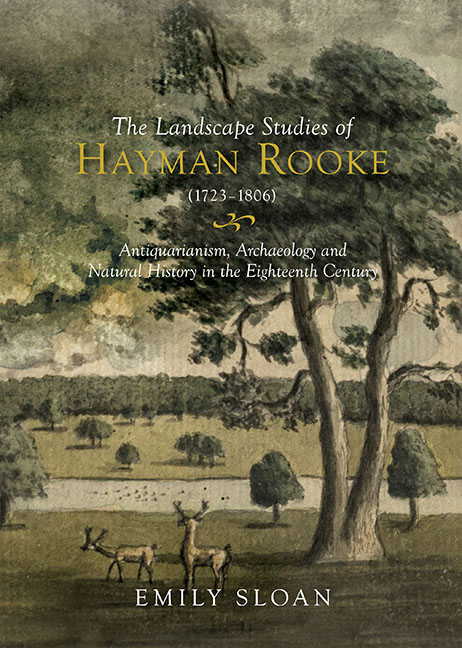 The Landscape Studies of Hayman Rooke (1723–1806)
The Landscape Studies of Hayman Rooke (1723–1806) Book contents
- Frontmatter
- Contents
- List of Illustrations
- Acknowledgements
- List of Abbreviations
- Introduction
- chapter 1 Rooke and His World
- chapter 2 Rooke and the Natural World
- chapter 3 Rooke and Ancient Britain
- chapter 4 Rooke and Roman Britain
- Conclusion Rooke and his Landscape Studies
- Appendix 1 List of Rooke's Publications
- Appendix 2 Reconstruction of Rooke's Diary
- Notes to the Text
- Bibliography
- Index
chapter 1 - Rooke and His World
Published online by Cambridge University Press: 31 August 2019
- Frontmatter
- Contents
- List of Illustrations
- Acknowledgements
- List of Abbreviations
- Introduction
- chapter 1 Rooke and His World
- chapter 2 Rooke and the Natural World
- chapter 3 Rooke and Ancient Britain
- chapter 4 Rooke and Roman Britain
- Conclusion Rooke and his Landscape Studies
- Appendix 1 List of Rooke's Publications
- Appendix 2 Reconstruction of Rooke's Diary
- Notes to the Text
- Bibliography
- Index
Summary
Hayman Rooke was born in February 1723, the first of six surviving children, to Brudenell Rice Rooke and his wife, Anne Millington. The Rookes lived in Berkeley Square, Piccadilly, which is probably where Rooke was born, before moving to Drayton in Middlesex twenty-five years later. The family estates in Kent had been sold a generation before Brudenell Rooke, and although attempts were made to buy back the country seat these did not meet with success. From Rooke's grandfather's generation down, the Rookes were military men. Heyman Rooke (1653–1723) and his cousin George (c.1650–1709) raised their own foot regiments, in which their sons served. George Rooke went on to become Admiral of the Mediterranean Fleet, and obtained a knighthood; the name Sir George Rooke became widely known following the capture of Gibraltar in 1705, and portrait prints of the officer sold well into the nineteenth century. Rooke's uncle, James Rooke, married a Gloucester heiress and settled at Bigsweir House, St Briavels, becoming MP for Monmouth.
Although Rooke's younger brothers were educated at Eton, there is no record of Rooke having preceded them there. Rooke may have been tutored at home and whilst serving as a page of honour to the Duke of Devonshire in Ireland. Family connections among the aristocracy may have allowed the young Rooke access to the classical libraries of his father's friends. Texts belonging to his great-grandfathers, both members of the early Royal Society, may have been among the books in his parents’ house in Piccadilly.
MILITARY CAREER
When Rooke was fourteen he joined the regiment of a family friend, Lieutenant-General Andrew Bissett, as a second lieutenant. The regiment, the 30th Foot, was billeted for several years in Ireland, where Rooke was able to indulge his passions for riding and hunting. In 1740, at the age of seventeen, Rooke was promoted to first lieutenant. Whilst on a recruiting mission in Gloucestershire in 1744, another family friend, Lord Beaufort, offered Rooke the use of Badminton House as his base for this excursion.
In 1746 the 30th Foot saw action in Quiberon Bay, on the Brittany coast. Two years later, in October 1748, the twenty-five-year-old Rooke achieved the rank of captain lieutenant. His regiment was sent back to Ireland in 1749 for another six years. In 1755 Rooke was promoted to captain.
- Type
- Chapter
- Information
- The Landscape Studies of Hayman Rooke (1723–1806)Antiquarianism, Archaeology and Natural History in the Eighteenth Century, pp. 9 - 44Publisher: Boydell & BrewerPrint publication year: 2019
